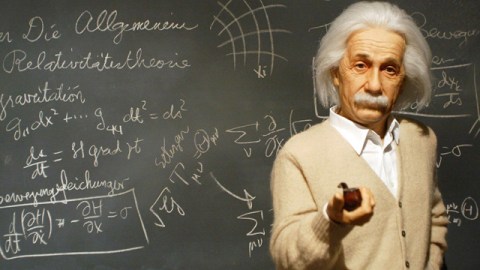Hotness Only Pays for Old, Male Profs

For years I have been one puzzled by one observation, when it comes to the men I know in my profession (economics professors): The rating that students give them on the website www.ratemyprofessors.com as to whether they are hot (or not) has little correlation with own my personal assessment of their hotness. Don’t get me wrong, economics professors are hot, I think we can all agree on that. But the student ratings for men don’t really jibe with what we think of in general as “hotness.” When it comes to female profs, on the other hand, I would say that the opposite is true and that the hotness ratings very much reflect characteristics associated with hotness such as physical beauty and youth. If students judge male and female professors by different standards on their level of attractiveness, this would explain the results of a new paper that finds that male professors who are hot are financially rewarded, while female professors who are hot are not.
There is a significant body of literature that finds a wage premium to physical beauty. One of the problems with this research is that it is difficult to directly measure worker productivity. For example, if we observe two women who are doing essentially the same job and find that the one who is more attractive is paid more than the one who is less attractive, it is tempting to assert that she is paid a premium for her beauty. But if other factors are correlated with both beauty and productivity, confidence for example, then in the absence of a direct measure of her output it is difficult to argue for the existence of wage discrimination based on appearance.
The productivity of professors—on the surface at least—is hard to measure. We can observe publication records and research grants, both of which should be at least correlated with productivity (although not perfectly). But measuring teaching productivity is more difficult.
In an ideal world we could observe how much students learned in their classes. Maybe we could use standardized exams, but given the diversity of topics and the ranges in difficulty levels between classes this would a challenge. We could see how students do when they leave our classes, in either other courses or in the workforce, but how would we measure that? So we rely, as we have done for years, on student evaluations of teaching performance. With that information, we can construct (perhaps flawed) measures of productivity that can be used to test the existence of a beauty premium in academia that controls for variations in productivity that may, or may not, be correlated with appearance.
This new paper, which looks at the wages, productivity and hotness of economics professors in Ontario, finds that male professors who are rated as “hot” on the Rate My Professor website are paid more than those who are not. This is true even after controlling for all other productivity factors, as well as field of research, size of institution, et cetera. The most interesting result is that this hotness premium only appears once men are beyond the middle of their career; there is no hotness wage premium for young, male professors. This suggests that the premium is not paid for what we traditionally think of as hotness (or beauty) but rather supports my earlier contention that students rate their male professors as hot on characteristics other than physical attractiveness, characteristics that could also be correlated with earnings: confidence, assertiveness, creativity, et cetera.
When it comes to female professors, there is no evidence of a beauty penalty (which I discussed in a post a few weeks ago) nor is there evidence of a beauty premium. This is true for women regardless of where they are in their career, but that result is because, unlike the men, students don’t rate their fifty-year-old female professors as “hot” just because they are confident or assertive. In fact, not a single female full professor in the sample has any “chili peppers” (which means that more students voted them hot than not). Qualities other than physical beauty that might earn female professors a hotness rating, kindness and generosity for example, are more likely to be negatively correlated with earnings than positively correlated.
When we are deciding whether or not we buy that there is a hotness premium for male academics, we need to remember that correlation does not imply causation. Consider a conversation I had with a mathematician a few years ago (I will leave you to figure out why) in which he said: “North American women are so shallow. In Europe, women will sleep with me just because of my publication record.” Maybe what this study tells is that he is wrong; North American women also are attracted to more successful academics.
— Sen, Anindya and Marcel Voia and Frances Woolley (2010). “The effect of hotness on pay and productivity” Working Paper.





